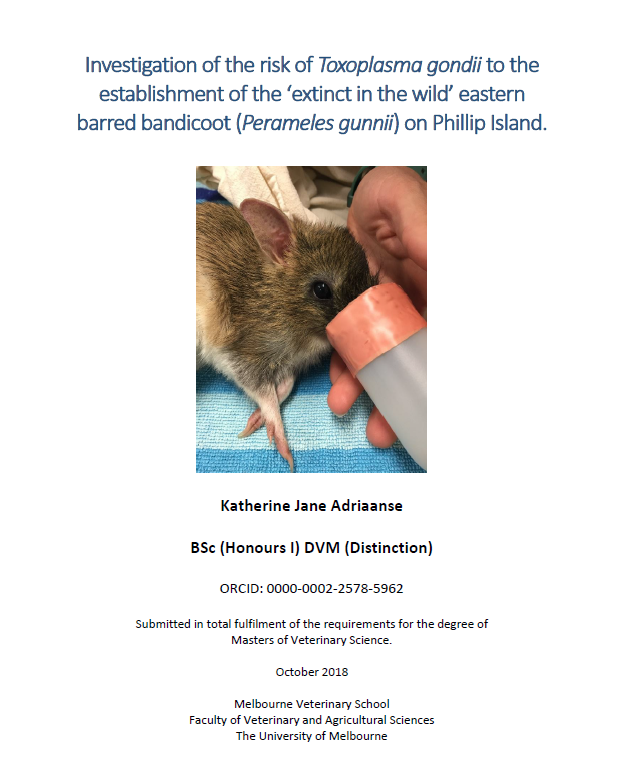Investigation of the risk of Toxoplasma gondii to the establishment of the ‘extinct in the wild’ Eastern Barred Bandicoot (Perameles gunnii) on Phillip Island.
Katherine Jane Adriaanse | Melbourne Veterinary School, Faculty of Veterinary and Agricultural Sciences, The University of Melbourne | 2018
The eastern barred bandicoot conservation program has proposed Phillip island as a reintroduction site for this species. However, feral cats and rabbits, which are a definitive host of Toxoplasma gondii, are present on the island and can pose a threat to these bandicoots as they are susceptible to toxoplasmosis. To understand the potential risk to the establishment of Eastern Barred Bandicoot on Phillip Island, epidemiology of T. gondii on Phillip Island was studied. In this study the prevalence of toxoplasma gondii in the feral cat population was determined by qPCR, using the MIC Real-Time cycler. The true prevalence of T. gondii was found to be 79.5% and 10.5% in cats and rabbits respectively, on Phillip Island. The high prevalence in cats may pose an issue for bandicoot relocation however, the low density of feral cats at the site may actually translate to low toxoplasmosis rick for Eastern Barred Bandicoots.
Read More